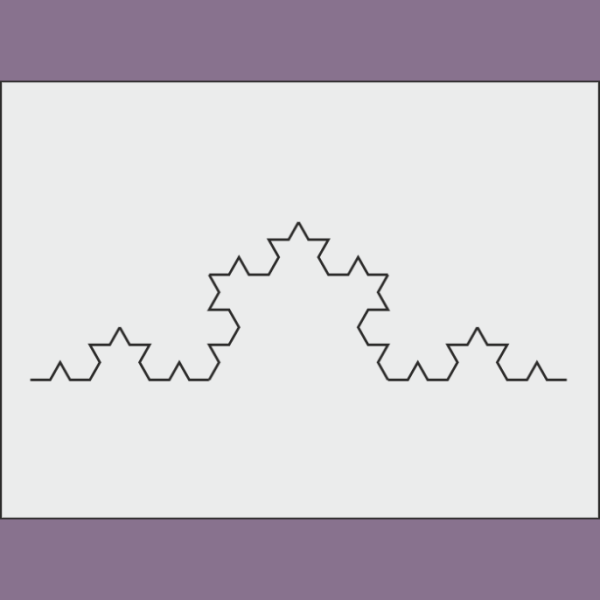Cathedral
At that time the Cultural Council of the city of Antwerp organised the annual "Music in the City" festival. The SEM ensemble, consisting of Joris De Laet, Paul Adriaenssens and myself, was invited to give a creation concert for the 1990 edition in the Ebes auditorium on Mechelsesteenweg in Antwerp. The specified theme was the Antwerp Cathedral.
The final result was presented on 19-May-1990
Fractals
Helge von Koch
With some good will one can represent the overall form of the cathedral schematically with a triangle like the figures on this page. A line segment can be replaced by a triangular construction which creates a protrusion consisting of 4 line segments which are 1/3 of the original line segment. This trick can be repeated on each new line segment. The small pieces refer to the original triangular shape.
The Fractal in the Cathedral
The smaller spires that decorate the cathedral can also be seen as a reference to the overall tower. On these small spires you will see further sculpted outcroppings which, still with some good will, represent a reference to the basic form. You can go on reducing the scale and perhaps even look at the structure of the stone used.
The Cathedral in a Composition
Just as in the above three-part fractal construction, this music also has three parts. They run from global to detailed. As a basis for this, sound recordings of the city were made from different heights on the Cathedral. Sound goes from vague to detailed
Sound from fuzzy to detail
The idea was to record city sounds from the top of the tower that would be less detailed as they were recorded from a greater height. Halfway up the tower there would be more detail and from ground level the detail would be at its maximum.
Computer graphics
The computer images were captured from a video I filmed at the tower. Only a few video images were used because everything had to fit on a few floppy disks. The images that go with the music were created with my first Archimedes 310 computer that did not (yet) had a hard disk. The computer had an internal 512 kilobyte RAM and was equipped with a digitiser that could capture video images in black and white at 256 by 256 pixels. It sounds unlikely today but that was pretty good for the time.
Diskettes
The photos of the video stills had to be placed on diskette uncompressed - there was no JPEG compression available yet - and during the performance they had to be loaded from this diskette into the memory again. This explains the limited image stock that was used. The only thing I could do in terms of real-time image processing was to link the various greyscale values from the photo to various colours and be creative with that.
laatste update: 2021.06.06









